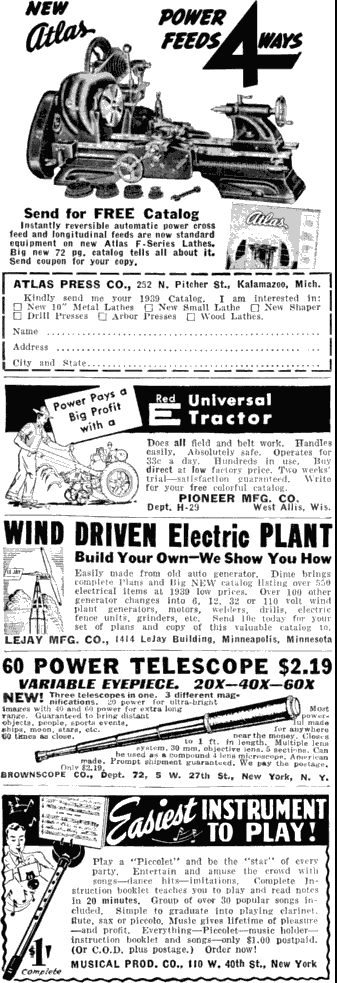
90
angles still to be ironed out by the experts.
Everyone in the industry is in agreement that wide scale television in the United States is impossible in the near future.
Present experience with sound broadcasting is of little help. The only place where television is practicable at all is on the very short wavelengths, and these have a useful range limited roughly by the horizon of the transmitting aerial. That's why NBC grabbed the tower of the Empire State Building and CBS took the Chrysler Building; the higher the aerial, the greater the area encompassed by the horizon. NBC figures on a radius of 25 to 40 miles for Empire State, so "nationwide" television service means hundredsprobably thousands-of individual stations, each designed to cover a specific territory.
Then there's the matter of programs. It would cost a couple of billion dollars-yes, billions, not millions-to connect a coast-to-coast network of television stations by means of co-axial cable, the only successful means so far developed, in order to permit the equivalent of "chain" broadcasting. Lacking this cable, each station would have to stage its own shows, or be satisfied with "canned" programs in the form of movie films. And that's not television (which is defined as "instantaneous sight at a distance"), but radio cinematography. No grade "A" broadcast station uses phonograph records; will they step down a notch and use "image records?"
Add the expense of a very costly television station to the expense of the necessary programs, and you know why there are only two or three television stations actually on the air, for a few minutes, now and then, in all of the United States. About twenty stations have been licensed by the Federal Communications Commission for experimental visual broadcasting (television to you!) but being licensed and being on the air are two different things!
And finally, there's that delicate little matter of the television images themselves. Television people start all discussions of results by saying, rather petulantly, "No one expected high-grade music in 1920, when broadcasting first took hold. Why expect perfect television pictures right away?" The trouble is that in 1920 any results were wonderful because there was no criterion, no standard by which to judge them. Today, however, television is terrifically handicapped by the widespread use and high degree of perfection achieved by home movie machines, both silent and with sound, and television engineers bite their nails to keep from screaming when the inevitable comparison is made. In England, which has had several years of continuous television under government sponsorship, the newspapers sadly report: "The trouble is not with television; it is the comparison with the cinema."